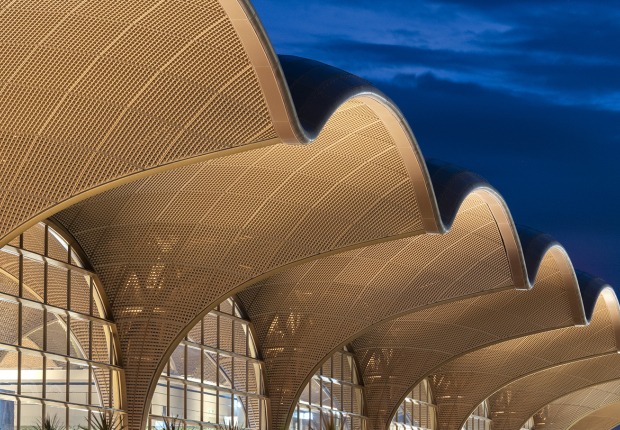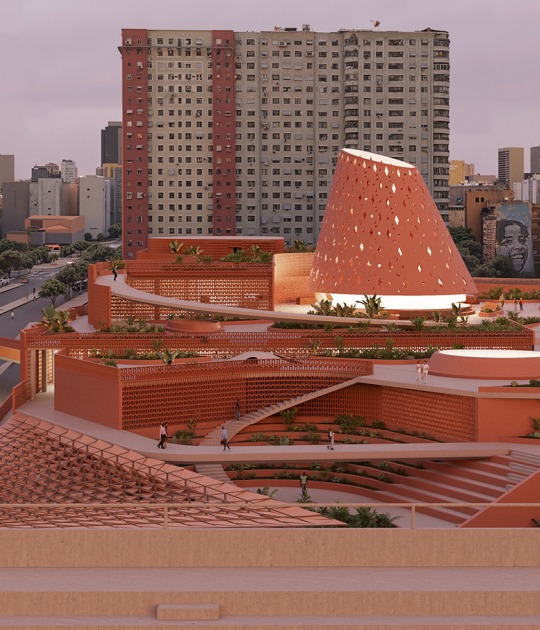The project focuses on large, open, and flexible spaces that will be continually adapted and reconfigured. Key elements are planned, such as the performance space called “Warehouse”, with a theater grid that covers the entire area (33 meters wide, 64 meters long, and 21 meters high, the most flexible performance space ) that allows its use as a single space or divisible into two through panels that move manually. Even the “Hall”, a 1600-seat auditorium located next to the “Warehouse”, can open towards it and jointly offer a larger space for ballet, theatre, music, and cross-arts performances.
The project dialogues with the industrial and cultural history of Manchester, which is referenced in the project through corrugated metal and exposed concrete. The building rises above Water Street and incorporates the 19th-century arches of the Pineapple Railroad. Typically, venues this size are relegated to the outskirts due to noise issues. However, by enclosing the structure with double layers of concrete and employing advanced acoustic techniques, the greatest acoustic insulation was achieved, allowing the building to be part of the city.

Aviva Studios by OMA. Photography by Marco Cappelletti.

Aviva Studios by OMA. Photography by Marco Cappelletti.
The materials used by the architects, such as exposed concrete and metal connections, reflect the industrial environment in which the building is located and provide a reinterpretation of industrial aesthetics, inspired by the traditional styles of factory facades.

Aviva Studios by OMA. Photography by Marco Cappelletti.
Project description by Ellen van Loon / OMA
Since it was launched in 2007, the Manchester International Festival has taken place in existing buildings both large and small throughout the city. But spaces with the qualities needed by the art pieces commissioned by the Festival are fewer and fewer, disappearing amid Manchester’s fast-paced redevelopment into England’s new economic hub. In 2015 Manchester City Council launched an architecture competition for a new kind of art venue for the Manchester International Festival (MIF), capable of hosting both art performances and exhibitions, separately or simultaneously.
MIF’s new home embraces Manchester’s industrial and creative past. Its facades of concrete and corrugated metal stand out amidst the refurbished brick warehouses and newly built glass-facing flats, offices, and television studios, which make up the new St. John’s neighborhood. The building hovers over Water Street and the arches of the 19th-century Pineapple railway line, now part of its foyer, opening up a much-needed swathe of public space towards River Irwell, forgotten between greedy new developments.

Aviva Studios by OMA. Photography by Marco Cappelletti.

Aviva Studios by OMA. Photography by Marco Cappelletti.
The Factory is not one building but two. Its main event space, the Warehouse, is one large, 21-meter tall, flexible container, left bare to be adapted by its users as they see fit. It can be used as a single space or subdivided into two, with full-height moveable partitions that provide acoustic insulation. Productions of different scales can take place inside, from intimate performances to concerts with 5,000 people standing. The ceiling is a technical grid, with lighting, equipment, and rigging, that supports concerts and exhibitions alike.
The Warehouse is complemented by the Hall, a 1,603-seat auditorium with a flexible stage, able to accommodate opera, ballet, theater, music, and cross-art performances. The Warehouse and Hall can work in tandem, allowing the stage to extend to a depth of 45 meters.



























































